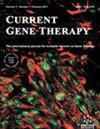作为结肠癌新治疗靶点的 AEG-1:从抑制 BALB/c 小鼠 AEG-1 到大型数据分析的研究
IF 3.8
4区 医学
Q2 GENETICS & HEREDITY
引用次数: 0
摘要
背景:星形胶质细胞增高基因-1(AEG-1)在各种恶性肿瘤中过度表达。肿瘤抑制因子 EXT-1 是恶性肿瘤的中间体。了解 AEG-1 和 EXT-1 之间相互作用的机制可能有助于深入了解结肠癌的转移。方法:用 AOM/DSS 诱导 BALB/c 小鼠患肿瘤。使用活体喷射 PEI 转染试剂,实现 AEG-1 和 EXT-1 siRNA 的瞬时转染。对切除的组织进行组织学评分、免疫组化染色和基因表达研究。从癌症基因组图谱(Cancer Genomic Atlas)和 GEO 数据库中获取数据,以确定 AEG-1 的表达状态及其与存活率的关系。研究结果在 BALB/c 小鼠中,经 AOM+DSS 处理的小鼠结肠出现坏死、炎症和发育不良,并伴有明确的临床症状,如腺泡细胞丢失、结肠缩短和胶原沉积。施用 AEG-1 siRNA 后,疾病活动指数大幅下降。用 EXT-1 siRNA 治疗的小鼠显示出腺泡细胞弥漫性减少。体内研究表明,PTCH-1的活性受上游基因AEG-1的影响,而AEG-1又可能影响EXT-1的活性。来自癌症基因组图谱和 GEO 数据库的数据证实了癌症患者体内 AEG-1 的上调和 EXT-1 的下调。结论本研究发现,AEG-1沉默可能会通过PTCH-1间接改变EXT-1的表达,从而影响细胞与ECM之间的相互作用,减少细胞的发育不良、增殖和侵袭。本文章由计算机程序翻译,如有差异,请以英文原文为准。
AEG-1 as a Novel Therapeutic Target in Colon Cancer: A Study from Silencing AEG-1 in BALB/c Mice to Large Data Analysis
Background: Astrocyte elevated gene-1 (AEG-1) is overexpressed in various malignancies. Exostosin-1 (EXT-1), a tumor suppressor, is an intermediate for malignant tumors. Understanding the mechanism behind the interaction between AEG-1 and EXT-1 may provide insights into colon cancer metastasis. Methods: AOM/DSS was used to induce tumor in BALB/c mice. Using an in vivo-jetPEI transfection reagent, transient transfection of AEG-1 and EXT-1 siRNAs were achieved. Histological scoring, immunohistochemical staining, and gene expression studies were performed from excised tissues. Data from the Cancer Genomic Atlas and GEO databases were obtained to identify the expression status of AEG-1 and itsassociation with the survival. Results: In BALB/c mice, the AOM+DSS treated mice developed necrotic, inflammatory and dysplastic changes in the colon with definite clinical symptoms such as loss of goblet cells, colon shortening, and collagen deposition. Administration of AEG-1 siRNA resulted in a substantial decrease in the disease activity index. Mice treated with EXT-1 siRNA showed diffusely reduced goblet cells. In vivo investigations revealed that PTCH-1 activity was influenced by upstream gene AEG-1, which in turn may affect EXT-1 activity. Data from The Cancer Genomic Atlas and GEO databases confirmed the upregulation of AEG-1 and downregulation of EXT-1 in cancer patients. Conclusions: This study revealed that AEG-1 silencing might alter EXT-1 expression indirectly through PTCH-1, influencing cell-ECM interactions, and decreasing dysplastic changes, proliferation and invasion.
求助全文
通过发布文献求助,成功后即可免费获取论文全文。
去求助
来源期刊

Current gene therapy
医学-遗传学
CiteScore
6.70
自引率
2.80%
发文量
46
期刊介绍:
Current Gene Therapy is a bi-monthly peer-reviewed journal aimed at academic and industrial scientists with an interest in major topics concerning basic research and clinical applications of gene and cell therapy of diseases. Cell therapy manuscripts can also include application in diseases when cells have been genetically modified. Current Gene Therapy publishes full-length/mini reviews and original research on the latest developments in gene transfer and gene expression analysis, vector development, cellular genetic engineering, animal models and human clinical applications of gene and cell therapy for the treatment of diseases.
Current Gene Therapy publishes reviews and original research containing experimental data on gene and cell therapy. The journal also includes manuscripts on technological advances, ethical and regulatory considerations of gene and cell therapy. Reviews should provide the reader with a comprehensive assessment of any area of experimental biology applied to molecular medicine that is not only of significance within a particular field of gene therapy and cell therapy but also of interest to investigators in other fields. Authors are encouraged to provide their own assessment and vision for future advances. Reviews are also welcome on late breaking discoveries on which substantial literature has not yet been amassed. Such reviews provide a forum for sharply focused topics of recent experimental investigations in gene therapy primarily to make these results accessible to both clinical and basic researchers. Manuscripts containing experimental data should be original data, not previously published.
 求助内容:
求助内容: 应助结果提醒方式:
应助结果提醒方式:


